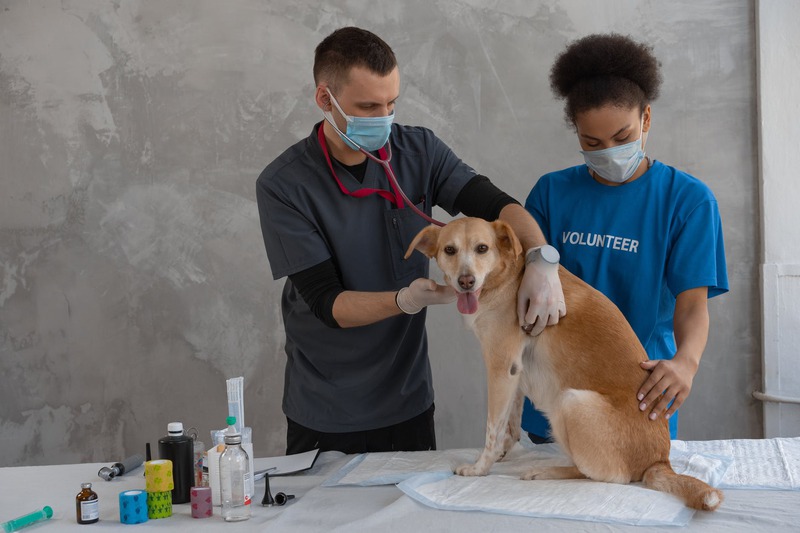Like most pet owners, if you’ve stumbled across this article searching for information about cat hyperthyroidism, you’re probably concerned and want to learn how to help your furry friend. This article aims to provide a comprehensive understanding of the condition and the options available for treatment.
What Is Hyperthyroidism in Cats?
Hyperthyroidism in cats is a common condition that affects older cats. It occurs when the thyroid gland in the neck starts producing too much thyroid hormone. This excessive hormone production can lead to various health problems, such as a fast heart rate, increased thirst, weight loss, and changes in their behavior. Hyperthyroidism is a significant health concern for aging feline companions and requires proper diagnosis and treatment by a veterinarian.
Symptoms Associated With Feline Hyperthyroidism
- Weight Loss: Despite a good appetite, cats with hyperthyroidism tend to lose weight over time.
- Increased Appetite: Affected cats may exhibit a ravenous appetite and demand more food than usual.
- Hyperactivity: Cats may become unusually active, restless, or exhibit increased energy levels.
- Rapid Heart Rate: A fast or irregular heartbeat, known as tachycardia, is a common symptom.
- Excessive Thirst: Cats may drink more water than usual, increasing water consumption.
- Poor Coat Condition: The cat’s fur may become unkempt, greasy, or poor coat quality.
- Vomiting: Some cats with hyperthyroidism may experience intermittent vomiting.
- Diarrhea: Hyperthyroidism can lead to gastrointestinal upset and frequent diarrhea.
- Increased Urination: Cats may urinate more frequently and produce larger volumes of urine.
- Behavioral Changes: Some cats may display restlessness, agitation, or personality changes.
It’s essential to consult a veterinarian if your cat shows any of these symptoms, as early diagnosis and treatment are crucial for managing hyperthyroidism effectively.
Treatment Options for Hyperthyroidism in Cats
1. Medication Therapy
- Administer daily medication, such as anti-thyroid drugs (methimazole or carbimazole), to reduce the production of thyroid hormones.
- Medication can come in oral tablets or transdermal gels applied to the skin.
- Regularly monitoring thyroid hormone levels in the blood is essential to adjust the medication dosage as needed.
- This treatment option effectively controls hyperthyroidism but requires lifelong administration to manage the condition.
2. Radioactive Iodine Therapy (I-131 Treatment)
- A specialized and curative treatment where a single injection of radioactive iodine is administered to the cat.
- The overactive thyroid cells selectively absorb the radioactive iodine, effectively destroying them.
- It is a safe and non-invasive procedure with a high success rate of permanently curing hyperthyroidism.
- After treatment, the cat may need to stay in isolation temporarily to minimize radiation exposure to others.
3. Surgical Thyroidectomy
- Surgical removal of one or both thyroid glands is performed under general anesthesia.
- This treatment effectively cures hyperthyroidism but carries the risks associated with surgery.
- Surgical thyroidectomy is less common than medication and radioactive iodine therapy, as it involves invasive procedures.
4. Dietary Management
- A non-medicated approach to managing hyperthyroidism through diet.
- A specially curated diet low in iodine is provided to the cat to help reduce thyroid hormone production.
- This option requires strict adherence to the prescribed diet, and treats or additional foods with high iodine content should be avoided.
- Dietary management can help control hyperthyroidism, but it may not be as effective as other treatment options, especially in severe cases.
5. Supportive Care
- Supportive care may be provided alongside specific treatments to address other health issues associated with hyperthyroidism.
- This can include managing concurrent conditions like kidney disease or heart problems that may worsen due to hyperthyroidism.
- Supportive care aims to improve the affected cat’s overall well-being and quality of life.
Hyperthyroidism in cats treatment is essential for ensuring the affected cat’s happy and healthy life. Each treatment option has its advantages and considerations, and the chosen approach should be tailored to meet the specific requirements of the feline companion.
Choosing the Best Treatment
- Consider the Cat’s Age: Age significantly determines the most appropriate treatment option. Older cats may have additional health concerns or a reduced tolerance to certain treatments. Treatment decisions should be tailored to the cat’s life stage and potential age-related conditions.
- Evaluate Overall Health: The cat’s health is crucial in selecting the right treatment. Cats with existing health issues, such as kidney disease or heart problems, may require specialized care. The chosen treatment should not negatively impact the cat’s pre-existing health conditions.
- Assess Severity of Hyperthyroidism: The severity of hyperthyroidism influences the treatment approach. Mild cases may respond well to medication therapy, while severe cases might require more definitive treatments like radioactive iodine therapy or surgical thyroidectomy.
- Early Diagnosis and Intervention: Timely diagnosis and intervention are vital to prevent the progression of hyperthyroidism and minimize potential complications. Regular veterinary check-ups and monitoring help detect hyperthyroidism early on.
- Consult with a Trusted Veterinarian: It’s crucial to consult with a trusted and experienced veterinarian in Huntersville, NC, who specializes in feline health. Discuss the cat’s medical history, symptoms, and any concerns about specific treatments. The veterinarian can provide valuable insights and guidance on choosing the best treatment option.
- Evaluate Treatment Risks and Benefits: Each treatment option has risks and benefits. Consider the potential side effects and long-term implications of each treatment. Weigh the benefits against the risks to make an informed decision.
- Consider the Owner’s Lifestyle and Capabilities: Some treatments, like medication therapy, require regular administration and monitoring, which may not suit every owner’s lifestyle or capabilities. Treatment compliance is crucial for successful management; choose an option that aligns well with the owner’s ability to provide care.
- Cost Considerations: Different treatment options have varying costs, and financial considerations are essential. Evaluate the cost of the chosen treatment and factor it into the decision-making process.
- Monitor Treatment Progress: After starting treatment, regular follow-up appointments with the veterinarian are necessary to assess treatment progress. Monitoring thyroid hormone levels and the cat’s response to treatment helps ensure its effectiveness.
When managing any medical condition in pets – prevention is better than cure. A pet wellness plan is a structured, proactive approach to ensuring your pet’s proper health care. It includes regular checkups, preventive treatments, vaccinations, and dietary management. Learn more about pet wellness plans by asking your veterinarian or checking the website or trusted vet clinics.
Conclusion
Realizing your pet has a medical condition is worrisome. Still, you can manage hyperthyroidism effectively with early detection and efficient treatment strategies – medication, dietary management, or other medical interventions. Remember, the cornerstone of maintaining your pet’s health lies in regular check-ups and a well-structured pet wellness plan – because they deserve the best.





